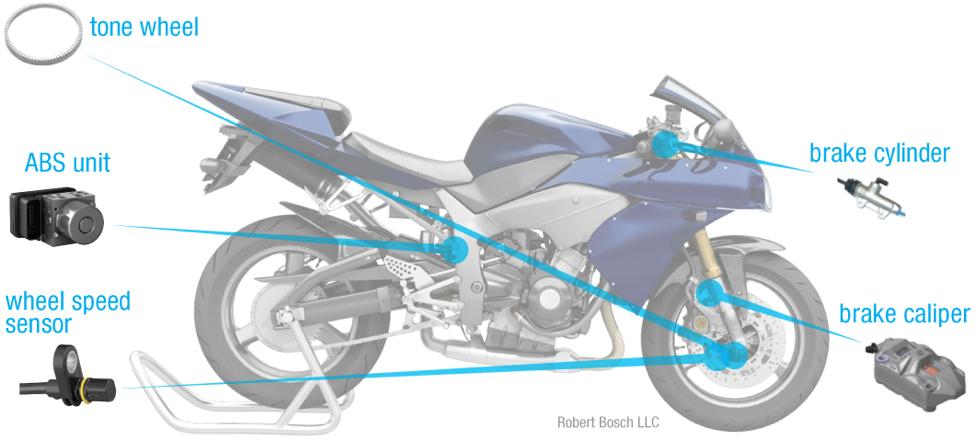Riding a motorcycle is inherently riskier than driving a car.
- Motorcycles are less stable than passenger vehicles during maneuvers such as emergency braking and swerving and are less visible on the road.
- When motorcyclists crash, they lack the protection of an enclosed vehicle, so they’re more likely to be injured or killed.
- Per mile traveled in 2021, the number of deaths on motorcycles in the U.S. was nearly 24 times the number in cars (NHTSA, 2023).
A proper helmet is the most important piece of motorcycle safety equipment.
- The federal government estimates that wearing a helmet reduces the risk of dying in a crash by 37% (NHTSA, 2008).
- Unhelmeted riders are 3 times more likely than helmeted ones to sustain traumatic brain injuries in the event of a crash (NHTSA, 2008).
An antilock braking system (ABS) reduces the risk of a motorcycle crash.
- ABS prevents wheels from locking up, and that’s crucial on a motorcycle. On a car, a lockup might result in a skid. On a motorcycle, it often means a serious fall.
- The rate of fatal crashes is 22% lower for motorcycles equipped with optional antilock brakes than for the same models without them (Teoh, 2021).
Some kinds of motorcycles are riskier than others.
- Supersport motorcycles have driver death rates about 4 times as high as that of cruisers and standards ( Teoh & Campbell, 2010). These bikes are built on racing platforms, and their combination of light weight and high-horsepower engines means many models can quickly reach speeds of more than 160 miles per hour, which encourages risky behavior.
Latest news
Regulators should require motorcycle ABS
Mandating antilock braking systems on all new motorcycles would save lives, an IIHS-HLDI petition argues.
November 13, 2023
Simple steps to save riders’ lives
Motorcyclist deaths are at a record high. Universal helmet laws and standard antilock braking systems, as well as more robust crash avoidance systems on other vehicles, could reverse the trend.
August 24, 2023








